What is Art Education
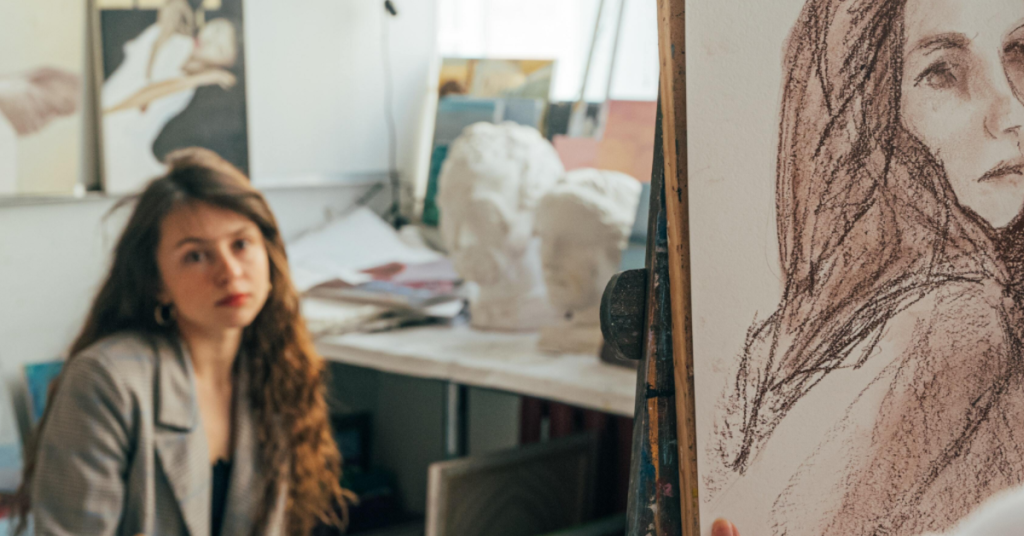
Are you curious about the power of art education? Have you ever wondered why it’s so important to have art in the classroom?
In this article, we will explore what is art education. From its benefits on individual growth and development to its ability to prepare students for life and work, we will dive into the fascinating world of art education.
Join us on this journey as we discover the true value of art education and how it can make a difference in students’ lives everywhere. Get ready to be inspired and amazed!
Key Takeaways
- Art education covers a wide range of visual and performing arts disciplines.
- The main goal is to teach students the creation, production, and appreciation of various art forms.
- Art education promotes creativity, critical thinking, and problem-solving skills.
Table of contents
The Disciplines in Art Education
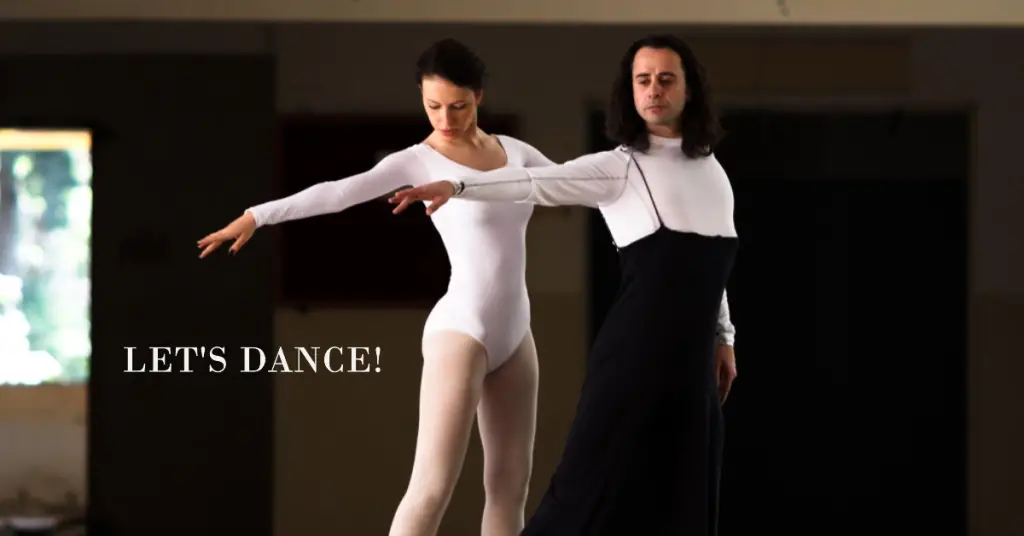
Art education encompasses a variety of disciplines that involve learning, instruction, and programming based on visual and tangible arts.
It includes performing arts such as dance, music, theatre, and visual arts like drawing, painting, sculpture, and design.
Art education aims to teach students how to create, produce, and appreciate various art forms, as well as to understand and evaluate the work of others.
Through art education, students are exposed to diverse artistic practices, where they can develop their creativity, critical thinking, and problem-solving skills.
Furthermore, it provides opportunities to explore cultural heritage and appreciate the importance of creativity in society.
Integrating arts into education allows learners to express themselves and discover their talents.
Understanding Art Education
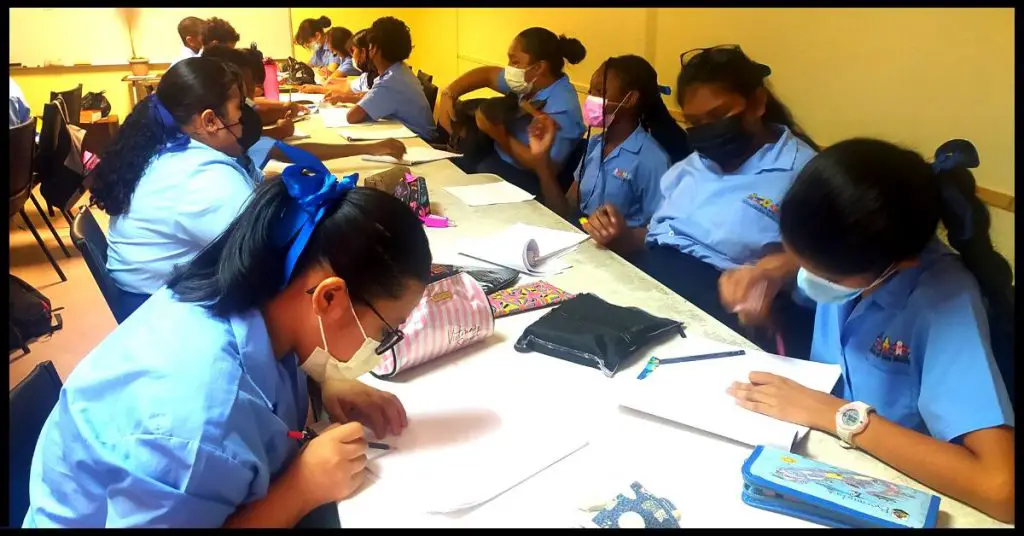
Art education is a vital educational experience that fosters creativity and artistic expression and offers various cognitive and emotional benefits.
It prepares students for the challenges in life by enhancing their problem-solving skills, visual-spatial abilities, and collaboration capabilities.
Incorporating arts in education allows you to explore your creative potential while providing a foundation for understanding various art forms.
Whether it is music, dance, visual arts, or theatre, arts education is crucial in broadening your perspective and nurturing your imagination.
As you delve deeper into the art world, you will learn that it is a powerful medium to express emotions, thoughts, and ideas, transcending cultural and linguistic barriers.
The essence of arts learning lies in its ability to facilitate the acquisition of artistic skills and instil a sense of appreciation for diverse art forms.
This helps you better understand various cultures, traditions, and histories, fostering empathy and respect for others.
Moreover, exploring, creating, and appreciating art can be therapeutic, enabling you to manage stress and emotional turmoil effectively.
To sum up, understanding art education is vital for holistic personal growth, encompassing cognitive, emotional, and social development.
So, embrace the world of arts, experience art education’s benefits, and appreciate the richness it brings to your life.
Importance of Art Education
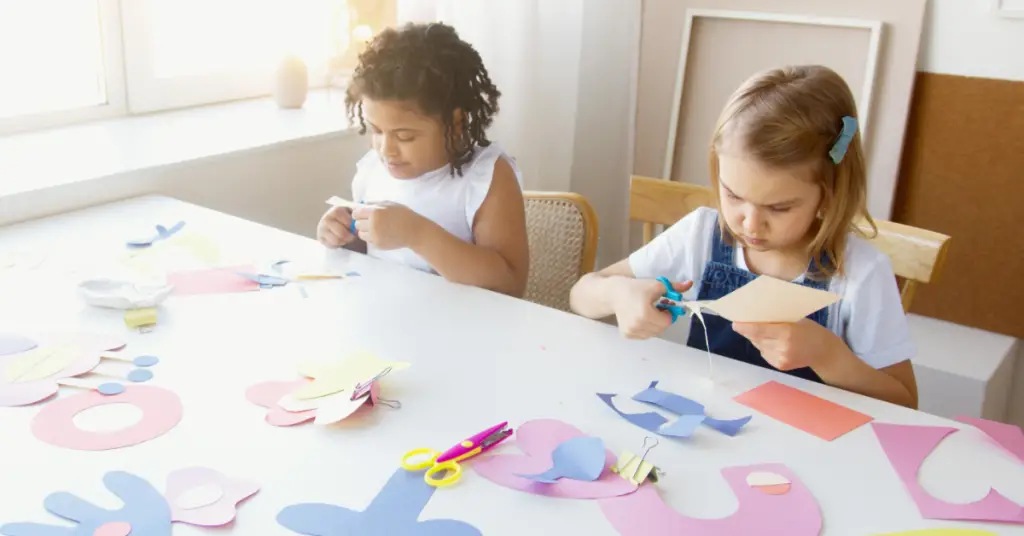
Art education is crucial in fostering creativity and promoting a well-rounded learning experience.
As you explore the importance of art education, you will find numerous benefits that contribute to the overall development of every student.
One of the primary reasons art education is essential is because it helps students engage with school and reduce stress.
Participating in various art forms, you can experience a sense of accomplishment, personal growth, and a deeper connection with your emotions.
This engagement enhances your learning experience and helps you better manage stress.
Incorporating art education into your curriculum aids in developing social-emotional and interpersonal skills.
Through artistic expression, you learn to communicate effectively, work collaboratively with others, and build empathy toward diverse perspectives.
These skills are essential for success in both personal and professional life.
A robust arts-learning environment enriches your educational experience by stimulating critical thinking and problem-solving skills.
Art education challenges you to view the world differently and develop innovative solutions to complex problems.
This exposure to diverse art forms fosters cognitive flexibility and adaptability, which are highly valued in today’s fast-paced world.
Partaking in art education equips you to handle constructive criticism. In the creative process, receiving feedback and refining your work is integral.
By embracing constructive criticism, you develop resilience and learn to persevere in facing challenges.
In conclusion, art education is vital to creating a well-rounded academic experience.
With numerous benefits, ranging from stress reduction to the development of interpersonal skills, it is clear that art education plays an essential role in every student’s overall growth.
Pedagogy in Art Education
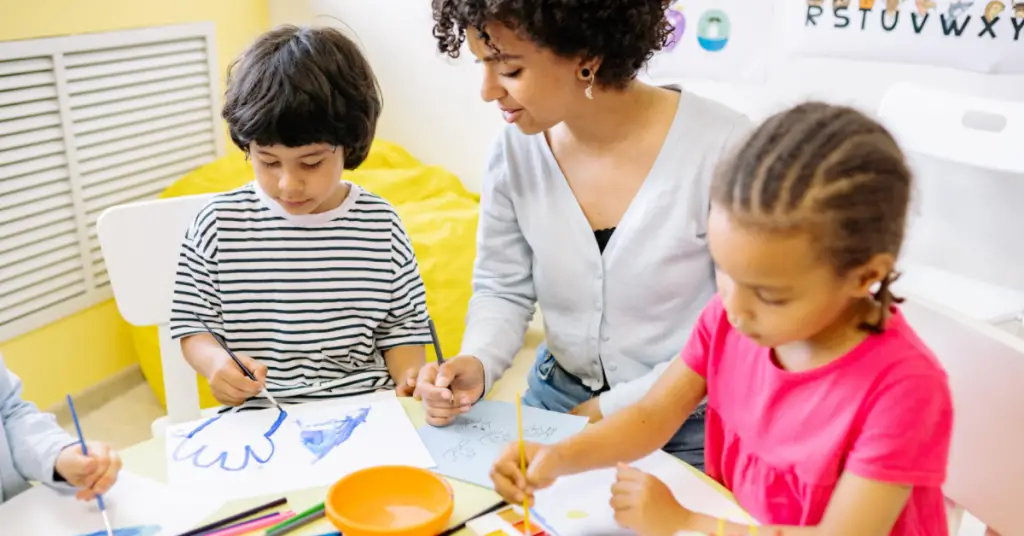
As an art educator, your primary role is to foster the development of creativity, critical thinking, and problem-solving skills in students.
Pedagogy in art education is vital to this role, as it outlines the methods and techniques used to teach art in a K-12 setting.
Choice-based pedagogy is a popular approach in art education, where you, as the art teacher, design learning activities that support students as artists and provide them with authentic choices to respond to their ideas and interests through art-making [1].
This approach encourages student autonomy, allowing them to explore various materials and techniques and their artistic visions.
Another critical aspect to consider in your pedagogy is culturally responsive teaching. As an art teacher, you must acknowledge and respect the diverse backgrounds of your students.
By incorporating their unique cultural experiences into your teaching and adapting your methods to ensure that all students can connect with the material, you are contributing to an inclusive art education environment.
This can be done by showcasing diverse artists, discussing various art forms from different cultures, and incorporating culturally relevant themes into projects [2].
You should also strongly understand discipline-specific knowledge and techniques to teach art effectively.
Your coursework and professional development should emphasize art history, contemporary artistic practices, and various media and materials.
This helps you introduce students to a wide range of artists and movements, enabling them to critically engage with the world of art.
As a teaching artist, you may also work in community settings, collaborating with schools, museums, or other organizations to bring art education experiences to various age groups and populations.
Your pedagogy might need to be flexible while working as a teaching artist, adapting to the unique needs and goals of each project or setting.
Collaboration and community engagement become essential elements of your teaching approach in these contexts.
Remember, your pedagogy in art education should be confident, knowledgeable, and clear, reflecting your dedication to fostering creative growth in your students while remaining attentive to their needs and backgrounds.
Doing so contributes to developing a new generation of artists and creative thinkers.
The Role of Art Educators
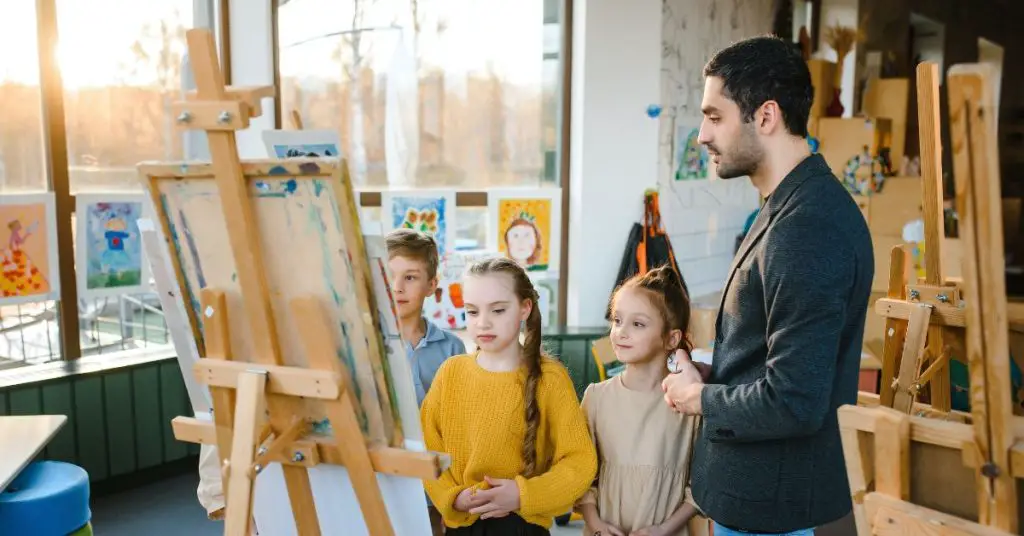
As an art educator, your primary responsibility is to provide students with a well-rounded understanding of the visual and tangible arts.
This includes teaching various art forms such as drawing, painting, sculpture, and design works and performing arts like dance, music, and theatre [3].
Your role goes beyond teaching the techniques and skills required to create art. It would help if you also instilled in your students an appreciation for and understanding of the cultural, historical, and social contexts in which different art forms have evolved.
This helps students develop critical thinking abilities and better comprehend the significance of art in society.
In addition to being knowledgeable in your subject matter, as an art educator, you should cultivate a creative and supportive learning environment for your students.
This includes encouraging experimentation, curiosity, and self-expression while providing constructive feedback to help students grow as artists.
Actively engaging in arts advocacy is another crucial aspect of your role as an art educator.
You can promote the value of art education by communicating its benefits to parents, school administrators, and community stakeholders, highlighting how it contributes to students’ overall engagement and achievement in school National Art Education Association.
In summary, as an art educator, your role encompasses teaching a variety of art forms, nurturing creativity, fostering critical thinking, and advocating for the importance of an arts education in students’ lives.
Visual and Performing Arts
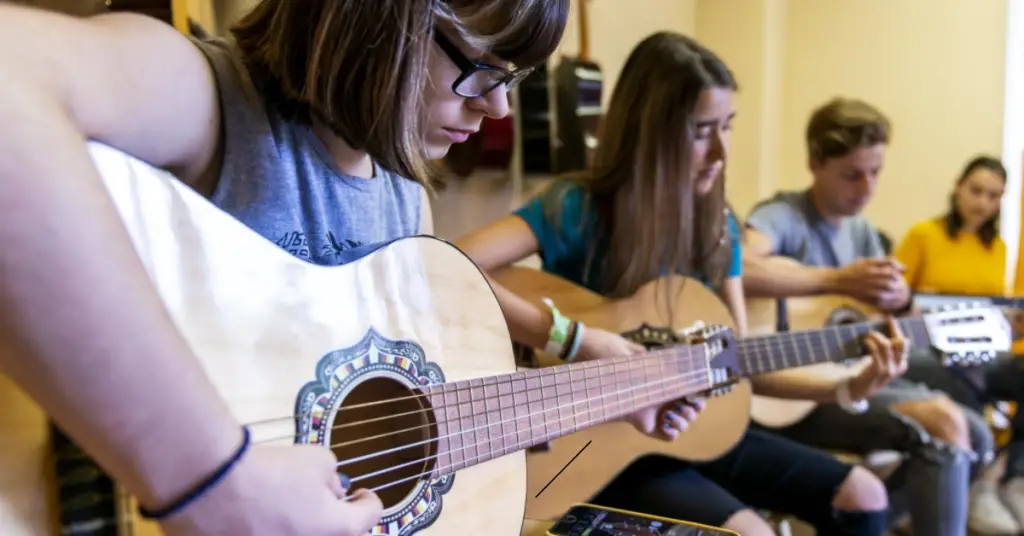
You’ll explore various disciplines in art education, including visual, performing, media, and contemporary art.
These fields allow you to understand creative expression better and develop your artistic abilities.
Visual art encompasses traditional fine arts such as drawing, painting, printmaking, photography, and sculpture.
You’ll also delve into media arts involving film, graphic communications, animation, and emerging technologies.
The curriculum includes architectural, environmental, and industrial skills like urban, interior, and product design [5].
On the other hand, performing arts consist of disciplines like theatre, dance, and music. These fields emphasize movement, expression, and storytelling, often utilizing the human body as the primary instrument.
Similarly, media arts focus on the fusion of technology and artistic mediums, like film, sound, and digital art.
Contemporary art is a vital aspect of art education as it helps you examine the current trends and societal issues shaping today’s art world.
This can involve exploring the works of present-day artists, situating them within a broader cultural context, and critically analyzing their messages and methodologies.
Ultimately, by studying visual and performing arts, you will foster your critical thinking and creative skills, preparing you to contribute to the global art community.
Art Education Programs
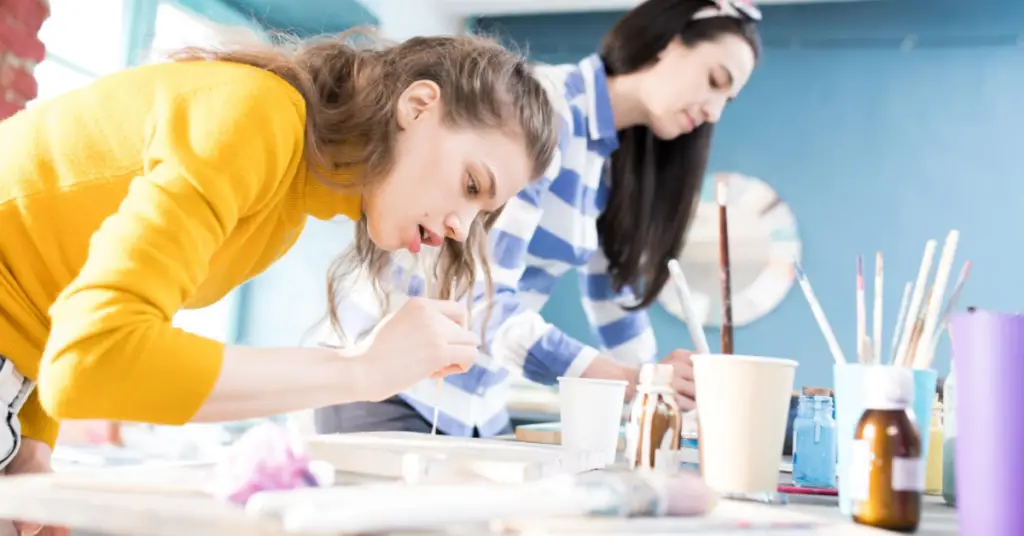
Art education programs play a crucial role in developing well-rounded students.
As a part of these programs, you’ll find courses encompassing various disciplines such as dance, music, theatre, and visual arts like drawing, painting, sculpture, and design works.
A Master of Arts degree in art education can help you advance your career and acquire expertise in art theory, practice, and pedagogy, enabling you to transform learning through creative engagement.
An art education program can give you the knowledge and skills to become an effective teacher and advocate for arts education in K-12 schools, community arts organizations, and other educational settings.
Many art education programs focus on building stronger communities and fostering strategic alliances that propel the arts forward as a solution.
As the demand for art education rises, it is essential to understand the benefits it offers to students.
When considering the different art education programs available, some focus on community arts, while others prioritize education in specific disciplines.
In community arts programs, participants often collaborate on art projects, emphasizing community involvement and social change. These programs aim to develop critical thinking, problem-solving, and communication skills.
Art education often plays a vital role in graduation programs, with many states having arts requirements for high school graduation.
This ensures that students are exposed to various art forms during their education, helping them appreciate diverse perspectives and enhance their creativity.
Enrolling in a reputed art school can help you access top-notch facilities, dedicated faculty members experienced in various art forms, and networks of fellow artists and creative professionals.
In summary, art education programs provide comprehensive exposure to the arts, building a solid foundation for creativity and critical thinking.
Participating in these programs contributes to developing your artistic skills and overall personal and intellectual growth.
Arts Integration in Education
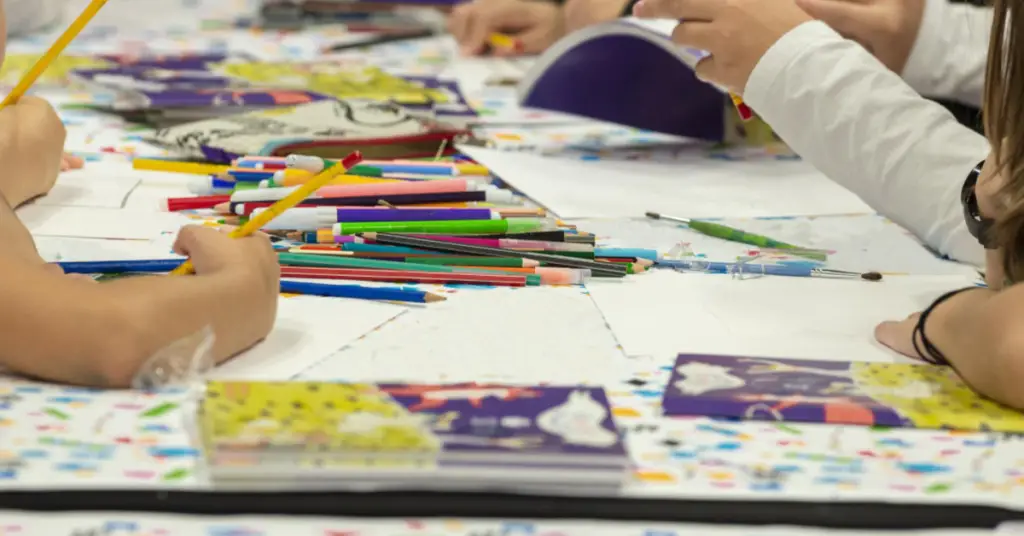
Arts integration is a teaching approach where content standards are taught and assessed equitably in and through the arts.
Through this interdisciplinary method, you can effectively incorporate multiple disciplines into your learning environments, enriching the core curriculum and enhancing students’ overall educational experience.
In an arts-integrated classroom, students construct and demonstrate understanding through various art forms.
This creative process connects an art form with another subject area, meeting evolving objectives and fostering a well-rounded educational experience.
For instance, you could combine visual arts with mathematics, helping students grasp geometric concepts in a hands-on, engaging way.
As a teacher looking to implement arts integration, collaboration is critical. Start by meeting with other educators to plan lessons using backward design.
This method focuses on the desired outcome, like your culminating event, exhibition, or final artwork, and builds the curriculum to achieve that goal.
This approach ensures all subject areas are effectively woven together and essential content is included in the learning process.
Implementing arts integration in your classroom has several benefits. It offers an innovative way to engage students and provides opportunities for differentiated instruction, reaching students with varying learning styles and abilities.
Connecting subject areas through the arts can create a more inclusive, diverse, and stimulating learning environment for all students.
So, as you strive to create a more dynamic and comprehensive educational experience for your students, consider exploring arts integration in your curriculum.
By merging multiple disciplines and fostering creativity, you can empower students and make learning more engaging, diverse, and meaningful.
Student Outcomes in Art Education

In art education, students experience various improvements in their learning outcomes.
By participating in arts programs, students can develop their ability to think creatively and critically, solve problems, and work effectively in teams.
When students engage in art education, they can nurture their creative thinking. Creative thinking is essential for creating innovative solutions to problems and uniquely expressing one’s ideas.
By honing their creative skills, students become more capable of generating new ideas and adapting to different situations.
Art education also fosters critical thinking abilities. As students analyze and interpret works of art, they learn to evaluate different perspectives, assess the quality of arguments, and make informed decisions.
This more profound understanding of artistic meaning helps students develop a more nuanced approach to interpreting the world around them.
Problem-solving is another critical learning outcome associated with art education. Students who engage in art projects often face complex challenges that require them to find solutions by experimenting with various techniques and materials.
Through this process, students become comfortable tackling complex problems, which can benefit them in other areas of their education and life.
Lastly, art education enhances teamwork skills. Many art projects require students to collaborate with others, either by working on a joint project or by critiquing each other’s work.
Students learn to communicate effectively, listen to others, and contribute to a larger goal by engaging in these collaborative activities.
Students can experience growth in these essential skills by participating in art education.
Creative thinking, critical thinking, problem-solving, and teamwork are all crucial outcomes of a well-rounded art education, providing students with a strong foundation for future success.
Art Practice and Learning Opportunities
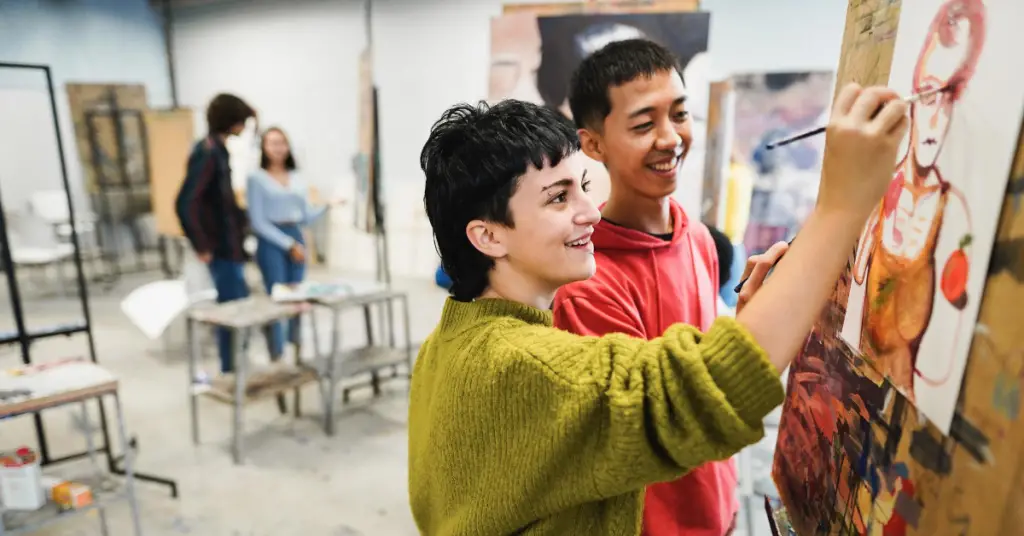
Studio Practice
In art education, studio practice is a crucial component that enables you to develop your technical skills and artistic abilities.
Engaging in hands-on experiences within a studio allows you to explore various materials, techniques, and creative processes.
This active participation not only refines your skills but also fosters a deeper understanding and appreciation of the visual arts.
Practical Experiences
Practical experiences in art education provide invaluable opportunities to apply your artistic knowledge in real-life situations.
These experiences can range from collaborating on group projects, participating in workshops, or attending masterclasses led by experienced artists.
Through these engagements, you gain insights into different perspectives, expand your creative horizons, and enhance your interpersonal skills.
Art Making and Creativity
Art-making and creativity go hand-in-hand in the realm of art education. By actively participating in creative activities, you develop a stronger sense of self-expression and expand your ability to generate innovative ideas.
Engaging in imaginative and artistic practice also promotes critical thinking, problem-solving, and visual communication skills, which can benefit you in various aspects of life.
Embracing art-making and creativity fosters a lifelong love of learning and enriches your educational experience.
The Impact of Art Education on Early Childhood Development
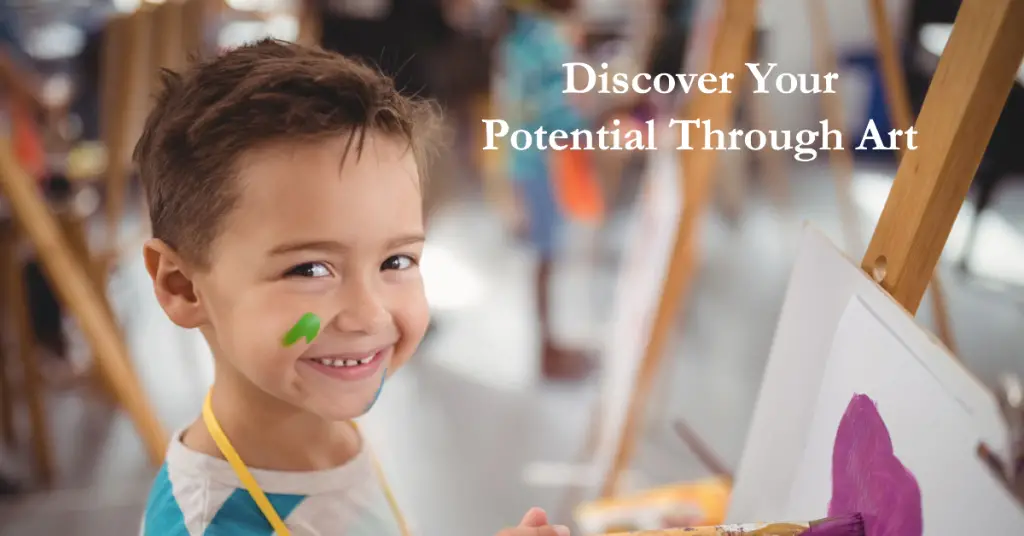
In early childhood education, the integration of art plays a significant role in the development of young artists.
Art education can be especially beneficial in the early years, as it helps to develop a strong foundation for future learning and overall growth.
When you introduce young children to the art world, you help foster their social and emotional development.
Various studies have demonstrated the value of incorporating artistic practices into early childhood education programs [6].
Encouraging young learners to engage in imaginative activities can improve social interaction, self-expression, and emotional regulation skills.
It is essential to believe that art education provides a unique opportunity for children to explore their creativity and learn to appreciate the beauty in their surroundings.
Children develop a sense of curiosity and wonder that translates into a lifelong love of learning by participating in diverse artistic experiences, such as painting, drawing, sculpture, and music.
As you support your child’s artistic journey, consider providing various materials and opportunities for them to engage in creative exploration.
By offering a safe and nurturing environment where children can experiment and express themselves freely, you can develop critical skills such as problem-solving, spatial awareness, and fine motor coordination [7].
In conclusion, as an advocate for your child’s education, it is essential to consider the impact of art education on their early childhood development.
By embracing the power of creativity and artistic expression, you can ensure that your child experiences a well-rounded and enriching educational journey with a solid foundation for future success.
Art Education Beyond the Classroom

Art education is not confined to the walls of a classroom. Many opportunities for growth and development exist beyond traditional art education settings, such as museum education, arts organizations, and community arts programs.
Museums are a great place to expose yourself to various art forms and expand your understanding of different artistic styles and periods.
By participating in museum education, you can enhance your appreciation for these masterpieces and gain a deeper connection to the cultures they represent.
While in-person art classes offer a distinct experience, joining art organizations can provide valuable knowledge and opportunities to network with other artists and professionals.
These groups often provide workshops, events, and resources to help you grow as an artist.
Community arts programs are another excellent way to pursue your artistic passions. Engaging in community arts helps bridge the gap between formal art education and everyday creative expression.
It is a chance for people of all ages and skill levels to collaborate, learn from each other, and make an impact in their local neighbourhoods.
Art education can also benefit non-arts fields by fostering creativity, problem-solving, and collaboration skills.
Brainstorming techniques, like collaborative sketching and mind-mapping, can be used across various industries to generate new ideas and improve decision-making.
Remember, art education is not just about painting and drawing; it is a flexible, powerful tool to help you develop your unique creative voice and become a better problem solver.
Take advantage of the opportunities available, explore new avenues, and let your art flourish beyond the classroom.
Future Perspectives in Art Education

Art education plays a vital role in shaping the creative minds of the future.
With upcoming trends and advancements, arts-based methods are being integrated into various aspects of learning, ensuring a more comprehensive and innovative approach to education.
One key aspect of future perspectives in art education is how it prepares students for the evolving world.
Including artistic practices in curriculums allows them to develop critical thinking, problem-solving, and communication skills.
Engaging in creative arts fosters a deep understanding of different perspectives, promoting empathy and tolerance.
Moreover, the integration of new concepts and innovations in the field of art education will provide unique opportunities for students to thrive.
For instance, using digital technologies and online platforms can open doors to new methods of exploration and collaboration, enabling learners to connect with experts from various disciplines and backgrounds.
The embrace of technology in art education will significantly enhance how you approach creative projects, equipping you with the necessary tools to master emerging forms of artistic expression.
Furthermore, the future of art education aims to focus on the importance of art in addressing social and emotional well-being.
Research indicates that engaging in creative endeavours helps students express themselves safely and positively, ultimately benefiting their mental health.
In conclusion, as you embrace the future perspectives in art education, you stand to benefit from integrating arts-based methods, new concepts, and a focus on holistic development.
By being involved in this ever-evolving field, you will be better prepared for the challenges ahead, fostering creativity and innovation that can significantly impact the world.
Final Thoughts on What is Art Education
As we conclude our exploration of art education, we are left with a deep appreciation for the power of creativity and self-expression.
Art education is not just about learning how to draw or paint; it’s about developing critical thinking skills, emotional intelligence, and empathy.
It’s about preparing students for a future where innovation and creativity are more crucial than ever before.
Art education can change the world by giving students the tools and skills they need to succeed in life and work.
So let us continue to support and advocate for art education, and let us never forget the profound impact it can have on individuals, communities, and society.
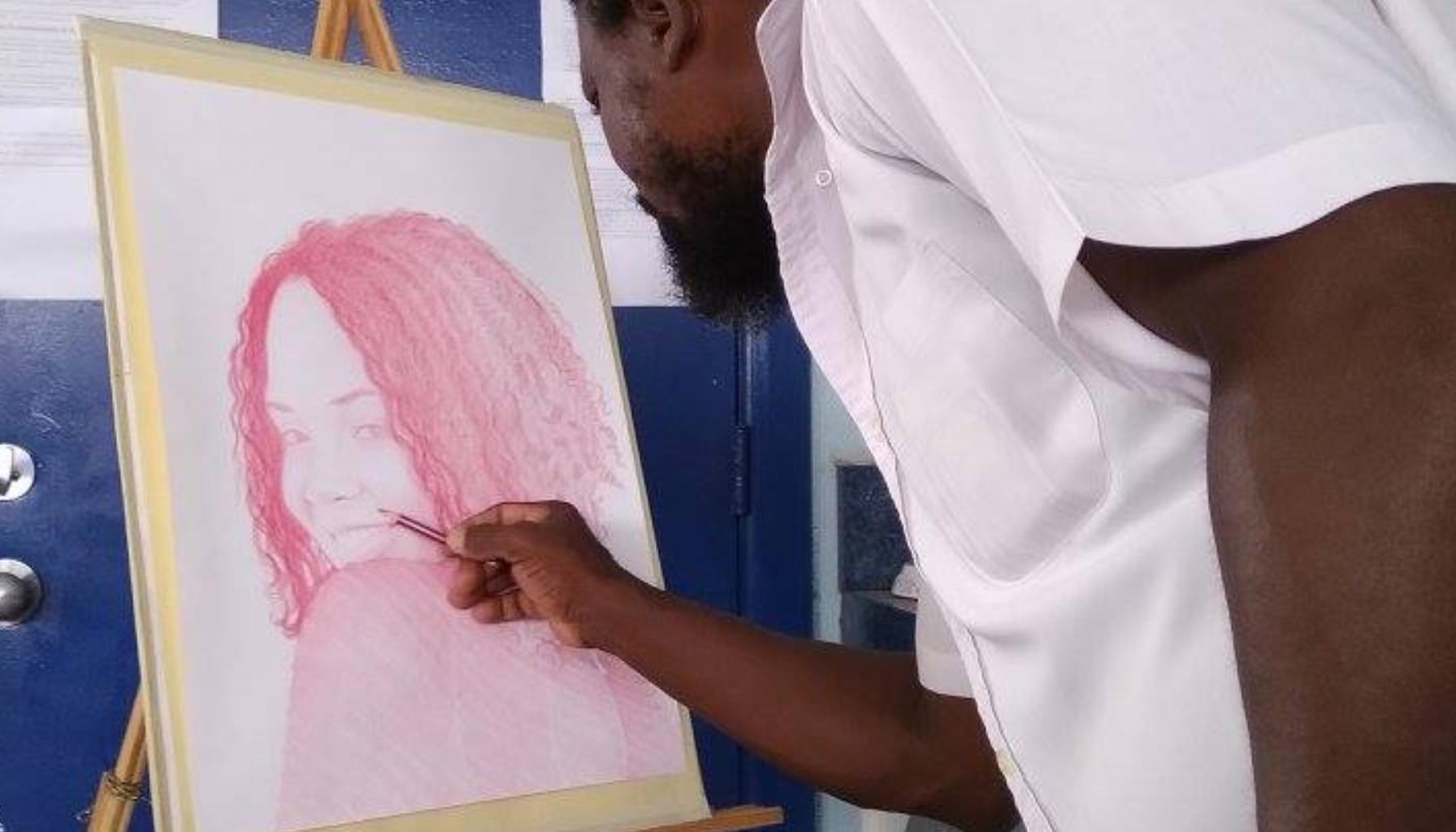
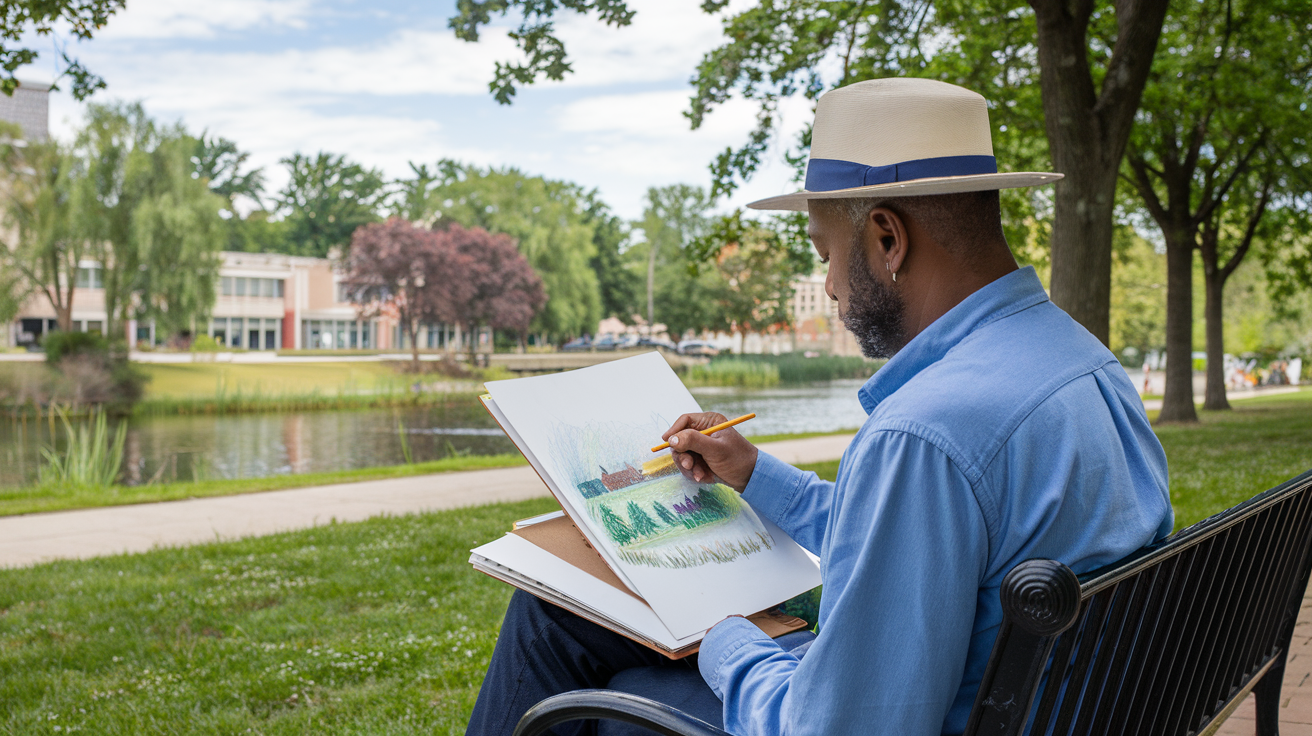
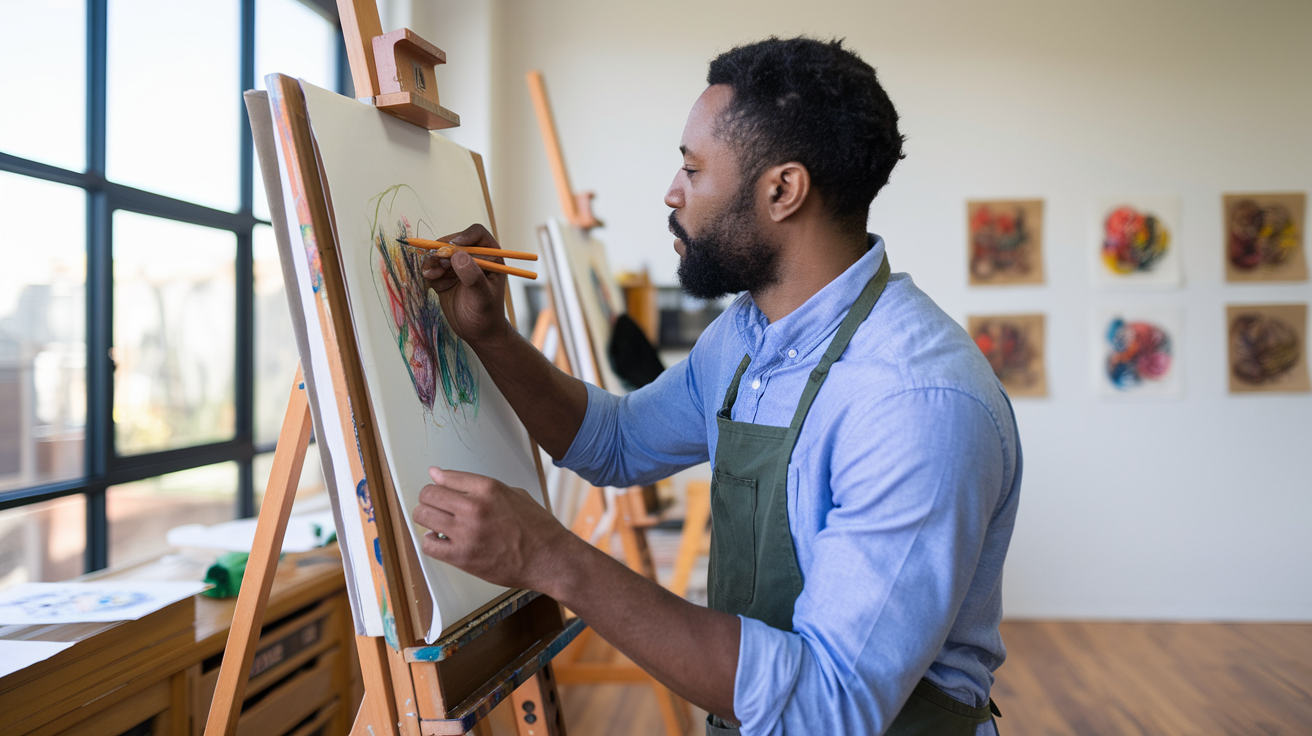
Leave a Reply